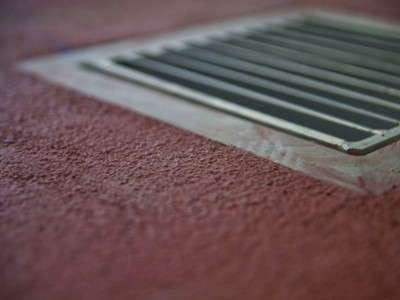Granolithic screed: when to use it, and how to choose it
What is granolithic screed?
Granolithic screed is a floor topping which is placed on to an existing hard base (usually a concrete slab), to form a durable top surface.
It comprises hard aggregates, cement and sand which are blended with water and sometimes polymers to make a workable mix.
A granolithic screed floor is sometimes topped with a floor covering, such as tiles – but it can be left as the final floor finish if required.
What does granolithic mean?
It refers to the hard aggregates in the screed, which can often be granite – but they are not necessarily so. Limestone can also be used; and some screeds are available on the market which contain recycled building materials.
What is it best used for?
Granolithic screed is used for applications where the surface needs to be hard-wearing like concrete, yet with a smoother finish. So, it can be used in a wide range of industrial flooring applications, such as food processing plants, industrial manufacturing and engineering, plus external pavements and ports, to name but a few.
What kind of finish does it give?
It’s usually a slightly textured finish – not entirely smooth, but smoother than concrete, and not unpleasant to look at or walk on. Some screeds are available in colours, so you are not limited to grey!
If a smoother surface is required, and the floor doesn’t need to be so hard-wearing, then other screed mixes are available which will give a finer finish.
Can granolithic screed be placed straight onto the concrete base?
No – it’s important to thoroughly clean the substrate first, and then apply some kind of bonding agent to the concrete, as specified by the screed manufacturer. The screed will contain a significant amount of cement, which needs water to activate it – so you need to treat the screed in the same way as you would concrete, which means using a bonding agent so the two surfaces don’t pull away from each other (delamination). Follow the manufacturer’s instructions carefully to make sure you get good results – for example, for our Indurit granolithic screed, we emphasise that it’s vital to apply the screed while the bonding layer is still wet.
What should be considered when choosing a granolithic screed?
Consider what the floor will be used for, and what hazards might occur. For example, if the floor needs to be cleaned regularly, to comply with hygiene requirements, make sure the screed has been designed to withstand regular contact with cleaning detergents.
Check that the aggregate particles in the screed have been graded, so they are about the same size. This will reduce the chance of air bubbles forming in the mix, which can weaken the screed.
Consider the temperature range for the building, and ensure the screed will keep its properties in those conditions. For freezer or furnace environments there may be extreme temperatures.
What granolithic screed does Rocland provide?
Please take a look at our product page for Indurit, our granolithic screed.
Please get in touch if you have any questions about the suitability of any of our products – we’ll be happy to help.




